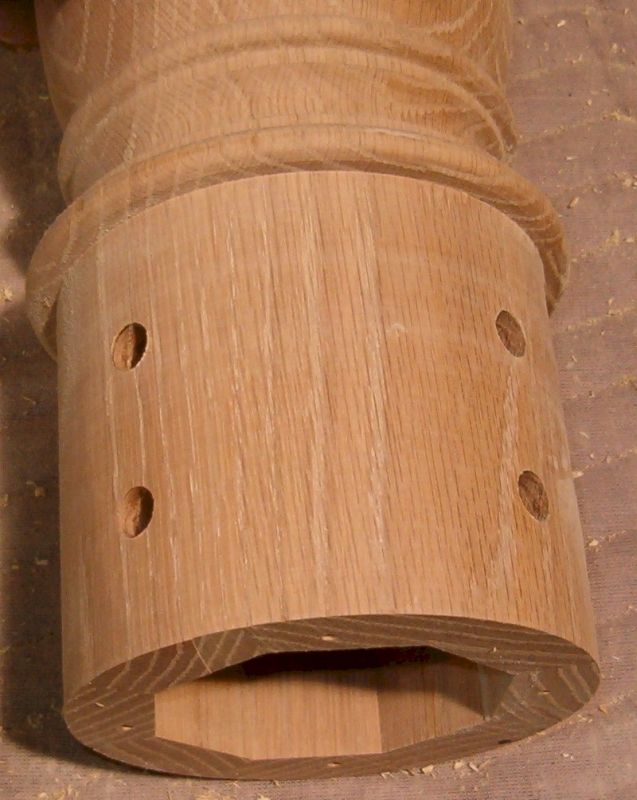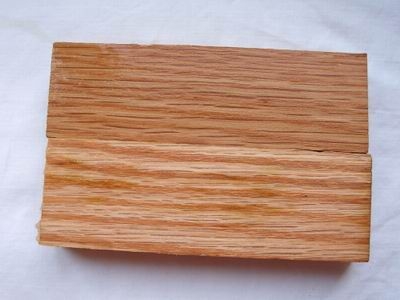Red Oak or White Oak?
More info on a question that comes up often. October 12, 2007
Question
Is this red or white oak?

Click here for higher quality, full size image
Forum Responses
(Furniture Making Forum)
From contributor G:
Red
From contributor J:
Red
From contributor R:
Red
From contributor W:
The way to tell for sure is to look at the large pores in the end grain. If they are open (you might have to use a razor blade and make a clean slice across the end grain surface), it is a red oak. If they are totally plugged up with a white crystalline substance (tyloses), then it is white oak.
From contributor M:
I read an article one time where you stick one end in a bowl of water. If you can blow bubbles, it is red oak, and if you can't, it is white. Since it doesn't appear from the picture that you can get your mouth wrapped around this piece, my vote is for red. :)
From Professor Gene Wengert, Sawing and Drying Forum technical advisor:
The comments about white oak being plugged are not correct. There are 5 species of white oak that are open. Most notable is chestnut oak, a porous white oak. So, not all white oaks are plugged.
[In fact, I saw an ad for Jack Daniels a few years ago that had a chestnut oak on the picture and the text talked about their whiskey barrels (which cannot use chestnut oak because the barrels would leak). I wrote them a note pointing out that they had the wrong tree in the picture and they were kind enough to send me a... nice letter. Darn.]
The way to separate red oak and white oak, which is also discussed in the archives here, is to look at the rays (the short dark lines running vertically in the picture). If the rays are under 3/4", it is red oak. If the rays are often 1-1/2" long, then white. The rays in this picture look short, so it is red.
There is also a stain (sodium nitrite) which is 100% and is discussed in the archives.
From Professor Gene Wengert, Sawing and Drying Forum technical advisor:
White on top.

Click here for higher quality, full size image
From contributor J:
Thanks, Gene. Yet when looking at the picture, the "white" looks darker than the "red."
From Professor Gene Wengert, Sawing and Drying Forum technical advisor:
The two pieces I have included are not touched up, but are just as they come. So, color is a poor indicator, but the rays are certainly wider and longer in the white oak. In the original picture, I also see long and wide rays in the left side piece, so I will conclude that it is white oak, even though the color (which is not a good indicator) is somewhat reddish.
The comments below were added after this Forum discussion was archived as a Knowledge Base article (add your comment).
Comment from contributor S:
When looking at the end grain of oak, I can usually tell the difference by the pores. In red oak they will be more open and in a uniform band. In white oak they will not look as open as the red, and will be more sporadic and inconsistently oriented. Sometimes it is a bit hard to tell unless you have a piece of each next to each other.

